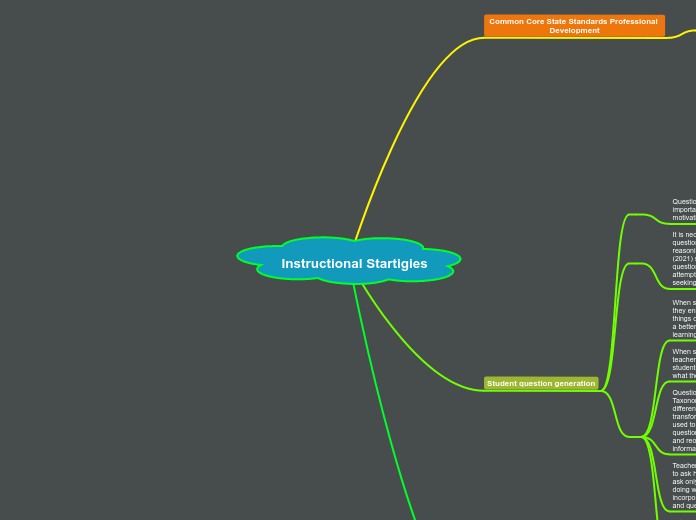Instructional Startigies
Common Core State Standards Professional Development
Mrs. Jay is a new elementary principal that went out of her comfort zone to help make learning about the new CCSS more meaningful and user friendly by adding web-based tools as a guide.
Mrs. Jay took the time to plan an inservice for her staff that was focused on what the teachers needed to feel comfortable with the changes to their school curriculum.
She began her planning process by taking the time to collect data from teachers on their current knowledge and comfort level with the CCSS. She did this by using Survey Monkey (a web-based tool). A lot of teachers decided they liked this tool and would like to use it in their classrooms.
Mrs. Jay was very aware and conscientious of teachers feelings and made an effort to make sure that teachers did not feel overwhelmed with all of the new information that needed to be presented about the CCSS. She decided to keep her inservice simple, informative, and applicable for teachers.
Mrs. Jay also used LiveBinders and Prezi to organize the information that she wanted to present to teachers. She went out of her comfort zone to use these web-based tools so it would be more useful and meaningful for teachers.
After Mrs. Jay’s presentation she reflected on her presentation and concluded that it is important to use technology, web-based tools, and collaboration to convey information. Also, modeling websites and web-based tools is a great way for teachers to learn new ways to use technology in classrooms. Finally that it is important for administrators want teachers to get out of their comfort zone of trying new skills and technology strategies, they needed to do the same as well.
Student question generation
Questioning is a foundational skill that plays an important role in making learning meaningful and motivating students.
It is necessary to teach students how to develop questions in order to develop deeper thinking, reasoning, and critical thinking skills. In an article Aflalo (2021) states, “Students’ questions, mainly in-depth questions, indicate that they are thinking about the topic, attempting to link new ideas to existing knowledge, and seeking comprehension.” (p.63)
When students learn start asking higher level questions, they enhance what they are learning, discover new things or information that was missing before, and gain a better understanding and motivation for what they are learning in the classroom.
When students are questioning during a lesson, a teacher can use that information to better assess where students are in the learning process. This might effect what the teacher does in future lessons.
Question types and levels can be based of off Bloom’s Taxonomy. These types of questions can be put into two different categories: confirmation questions and transformation questions. Confirmation questions are used to help clarify information and transformation questions have students transforming, reconstructing, and reorganizing the way they are understand information.
Teachers need to be trained how to teach students how to ask higher level thinking questions. Teachers tend to ask only confirmation questions because they are just doing what they have been used to doing and not incorporating strategies to teach higher level thinking and questioning.
In the article Aflalo (2021) states, “The more teachers incorporate student self-generation and peer assessments of questions into their lessons, instead of sufficing with answering questions, the more they will promote learning where the students are more active and involved in their learning.”(p.73)
Resources:
Hale, Janet A.; Fisher, Michael. Upgrade Your Curriculum: Practical Ways to Transform Units and Engage Students . ASCD. Kindle Edition.
Aflalo, E. (2021). Students generating questions as a way of learning. Active Learning in Higher Education, 22(1), 63–75. https://doi-org.wwu.idm.oclc.org/10.1177/1469787418769120
